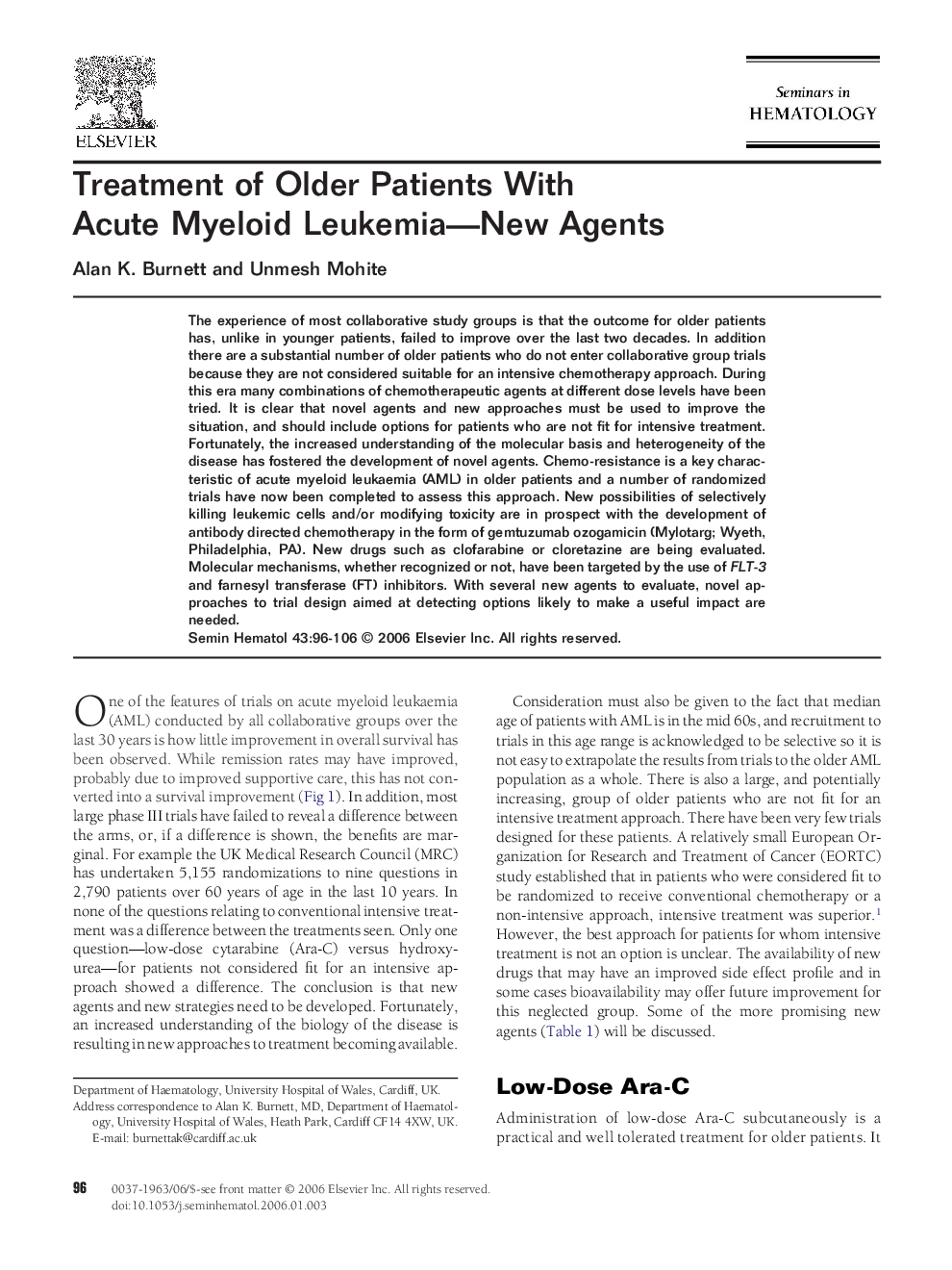| Article ID | Journal | Published Year | Pages | File Type |
|---|---|---|---|---|
| 3334141 | Seminars in Hematology | 2006 | 11 Pages |
Abstract
The experience of most collaborative study groups is that the outcome for older patients has, unlike in younger patients, failed to improve over the last two decades. In addition there are a substantial number of older patients who do not enter collaborative group trials because they are not considered suitable for an intensive chemotherapy approach. During this era many combinations of chemotherapeutic agents at different dose levels have been tried. It is clear that novel agents and new approaches must be used to improve the situation, and should include options for patients who are not fit for intensive treatment. Fortunately, the increased understanding of the molecular basis and heterogeneity of the disease has fostered the development of novel agents. Chemo-resistance is a key characteristic of acute myeloid leukaemia (AML) in older patients and a number of randomized trials have now been completed to assess this approach. New possibilities of selectively killing leukemic cells and/or modifying toxicity are in prospect with the development of antibody directed chemotherapy in the form of gemtuzumab ozogamicin (Mylotarg; Wyeth, Philadelphia, PA). New drugs such as clofarabine or cloretazine are being evaluated. Molecular mechanisms, whether recognized or not, have been targeted by the use of FLT-3 and farnesyl transferase (FT) inhibitors. With several new agents to evaluate, novel approaches to trial design aimed at detecting options likely to make a useful impact are needed.
Related Topics
Health Sciences
Medicine and Dentistry
Hematology
Authors
Alan K. Burnett, Unmesh Mohite,
